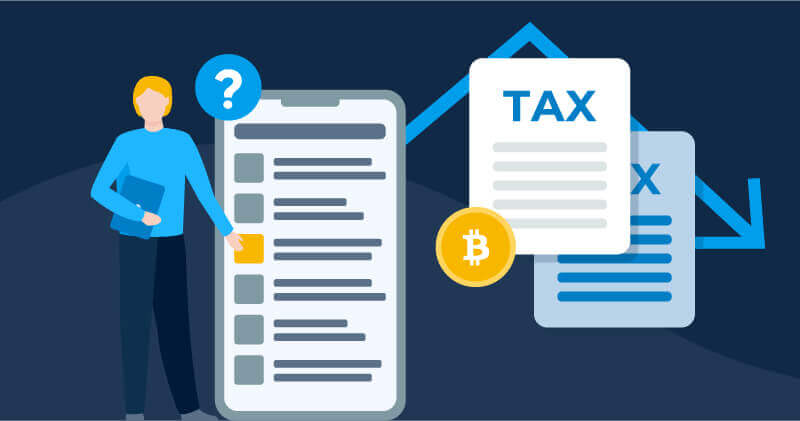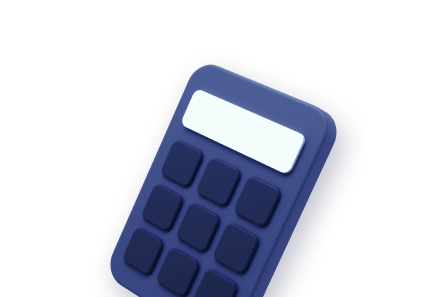

Key Takeaways
- Practice with small amounts: If you're getting started, try trading with small amounts or usng a demo account. Crypto trading is hard to master — it’s better to lose small amounts while you're still learning.
- Learn the basics of technical analysis: Learning how to read charts can be helpful for beginners — like understanding support and resistance.
What is cryptocurrency?
Cryptocurrencies are digital assets powered by blockchain technology. Unlike traditional currencies controlled by central banks, cryptocurrencies use a virtual, transparent ledger. This means that anyone can verify transactions and see who owns a crypto-asset.
Created in 2009, Bitcoin was the world’s first cryptocurrency. Since then, cryptocurrency has become a trillion dollar ecosystem, with thousands of cryptocurrencies and memecoins.
What is cryptocurrency trading?
.jpg)
Because the cryptocurrency ecosystem is so new and volatile, there is an opportunity to earn profits through trading. Here's how it works:
Profit opportunity: Cryptocurrency prices can rapidly go up and down, which means that traders who can ‘time the market’ — buy low and sell high — have the opportunity to earn significant profits.
24/7 trading: Unlike the stock market, cryptocurrencies are open to trade at any time — not just during business days.
Accessibility: Getting started with crypto trading is easy. Just sign up for an exchange, add a payment method, and start buying and selling cryptocurrencies!
How to trade cryptocurrency (step-by-step)
Here’s how you can get started trading cryptocurrency.
Step 1: Find an exchange
The first step to trading cryptocurrencies is finding a trustworthy exchange with a reputation for security.
Popular choices for beginners include Coinbase, Kraken, and Robinhood.
If you’re planning to trade cryptocurrencies on a frequent basis, you should choose an exchange with low fees. This will significantly reduce your trading costs.
Creating an account with one of these exchanges typically takes just a few minutes — though it might take 1-2 days to verify your identity.
Step 2: Find a cryptocurrency
Select the cryptocurrencies you want to trade. Here are some popular options:
- Bitcoin (BTC)
- Ethereum (ETH)
- Solana (SOL)
- Ripple (XRP)
- Cardano (ADA)
- Avalanche (AVAX)
For beginner traders, it’s recommended to start with a small amount of a well-known cryptocurrency like BTC. If you’re just getting started, you should steer clear of memecoins — which can be profitable, but are highly risky!
Step 3: Buy your cryptocurrency
You can buy cryptocurrency on most exchanges by following these steps:
- Link a payment method so that you can get started buying cryptocurrencies. The easiest way to get started is to link your bank account (the exchanges we recommended above have security processes in place to prevent hacks).
- Select the cryptocurrency you wish to purchase. Then, ‘Click Buy’.
- Review details like the price and relevant fees. Then, confirm the purchase.
Step 4: Monitor your position
Once you’ve bought your cryptocurrency, you should monitor your positions.
Remember, the more time you spend in the cryptocurrency ecosystem, the more you'll be able to understand price movements. Tracking how different news events and trends impact crypto prices can help you become a more successful trader.
Step 5: Close your position
To sell cryptocurrency on your exchange, follow these steps:
- Go to the "Buy/Sell" page.
- Select the cryptocurrency and the amount you wish to sell.
- Confirm the transaction.
Step 6: Consider using trading tools
Once you’ve found an exchange that supports your trading needs, you should consider using tools that can help you become a more successful trader. Here are some popular tools:
- CoinMarketCap: CoinMarketCap is a free platform where you can find data on nearly every cryptocurrency—like its market cap (the total value of all its coins), trading volume, and price history. It’s a helpful way to study and compare different crypto projects.
- TradingView: TradingView is a charting tool that’s designed for technical analysis. The platform allows you to analyze charts. With a user base of more than 500 million, TradingView is a popular choice for day traders and swing traders!

- LuxAlgo: LuxAlgo is a subscription-based trading tool that can integrate with TradingView and give you advanced toolkits and indicators designed to help you understand when it’s time to buy and sell. The platform also comes with BackTesting — allowing you to see how your trading strategy would perform in past markets.
- CoinLedger: CoinLedger is a tax reporting software and crypto portfolio tracker used by more than 700,000 investors! CoinLedger can help you track your gains and losses across all of your wallets and exchanges and generate complete tax reports when tax season rolls around.
Should I invest in crypto or trade crypto?
.jpg)
For some investors, buying and holding cryptocurrencies for the long-term (often referred to as investing or "HODLing") may be a better strategy than short-term trading. Let’s walk through some reasons why:
Historical success: Historically, investors who’ve held cryptocurrencies like BTC and ETH for the long-term have seen strong returns.
Monitoring market movements requires time: Short-term trading involves paying attention to changes in the market. If you don’t have the time to look at daily price changes, buying and holding might be a better strategy.
Trading requires separating yourself from emotions: Trading often requires separating yourself from your emotions — as it’s easy to panic and sell your crypto at the first sign of the downturn. If you have trouble staying clear-heade, you should consider buying and holding for the long-term.
If you choose to invest, consider dollar-cost averaging your cryptocurrency — in other words, buying a small amount of a cryptocurrency on a regular basis. This can help you build up your holdings over time without worrying about timing the market perfectly.
10 tips to be a successful crypto trader
Let’s walk through a few tips that can help you become a successful trader.
- Use technical analysis: Technical analysis can help you understand the recent price movements of cryptocurrencies and make short-term price predictions (more on this later in the article!)
- Research the market: To be a successful trader, it’s important to have a deep understanding of the market. Do your research on the long-term fundamentals of the cryptocurrency, and follow price movements over time. If you don’t do deep research and you buy and sell completely based on social media trends, it’s possible that you might decisions based on panic.
- Stay up-to-date on crypto news: Follow trustworthy crypto news sites, crypto podcasts, and relevant Telegram groups to find news that may impact prices — such as regulatory updates, project announcements, and changes in Federal Reserve policies.
- Keep a trade journal: Remember, having a losing trade is inevitable. Be sure to learn from your mistakes to avoid them in the future. Keeping a trading journal to remember your reasons for making a specific trade can be a great way to learn to separate yourself from your emotions and become a better trader.
- Use stop losses: To limit your potential losses, consider using stop losses. Stop losses allow you to set the maximum amount that you are willing to lose in a trade before the position automatically is sold off.
- Focus on the cryptocurrencies you know best: Focusing on a few cryptocurrencies and study their price movements. Over time, you will likely learn how certain events impact the price of these assets.
- Set a profit target: Many successful traders set realistic price targets that they aim to hit with each trade. This can prevent you from waiting too long to sell a certain position. For example, a goal of 20% profit on each trade is realistic — and can add up to significant profits over time.
- Understand your risk tolerance: Keep in mind how much risk you are willing to take on when trading crypto. Only invest what you can afford to lose.
- Backtest your strategies: Before using a new trading strategy, use ‘backtesting’ tools to test it against historical data. This can help you see how your strategy would have performed in past markets.
- Keep in mind position sizing: To limit risk, don’t put too much of your total holdings into a single trade. It’s recommended that you never put more than 2% of your capital into a single position.
Is crypto trading profitable?
.jpg)
Crypto trading can be profitable, but is also highly risky. Here are two things to keep in mind:
High risk, high reward: The market's volatility means that while there are opportunities for substantial gains, there is also the potential for significant losses.
Be cautious when trading: To mitigate potential risks, you should never invest more than you could afford to lose.
What are some terms I should know as a crypto trader?
It’s important to remember that the cryptocurrency world has its own vocabulary and terminology. Let’s walk through some common terms you should know.
Tokenomics: Tokenomics refers to the economic design of a cryptocurrency — including how tokens are distributed to the project's team and early investors. High insider ownership or a high inflation rate may hurt a cryptocurrency’s long-term prospects.
HODL: HODL originated from a 2013 forum post where a Bitcoin investor repeatedly misspelled “hold”. Today, it’s used as a rallying cry to encourage investors to hold in market downturns.
DEX/CEX: DEX stands for decentralized exchange, where crypto trades happen peer-to-peer without a middleman. CEX stands for centralized exchange, like Coinbase or Binance, where a company facilitates the trades and holds custody of your funds. While CEXs are typically easier to use, DEXs often have newer and more experimental coins.
Rug Pull: A rug pull is when developers abandon a crypto project after cashing out investor funds — leaving holders with worthless assets. It’s a common scam in the crypto world.
Market capitalization (market cap): Market cap is the total value of a cryptocurrency, calculated by multiplying its price by the number of coins in circulation. It’s an important tool for comparing the size and risk level of different coins — large-cap cryptos like Bitcoin tend to be more stable, while small-cap coins can see bigger swings.
FOMO: FOMO, or Fear of Missing Out, happens when investors buy in because they’re afraid of missing out on profits.
Ticker: A ticker is a symbol used to identify a cryptocurrency, similar to a stock ticker. For example, ETH stands for Ethereum, and DOGE stands for Dogecoin.
Paper hands/Diamond hands: Traders with ‘paper hands’ sell their holdings quickly. Meanwhile, traders with ‘diamond hands’ hold cryptocurrency for the long-term — even when prices are crashing.
Liquidity: Liquidity measures how easily a token can be bought or sold without affecting its price. Established coins typically have higher liquidity — which means there's less risk of sudden price swings during large transactions.
Whale: A whale is a crypto investor who holds a large amount of a specific cryptocurrency. Because of the size of their holdings — their trades can move markets. That’s why many investors pay close attention to whale activity.
Should I trade memecoins?
In recent years, memecoins like DOGE and FLOKI have become more and more popular. These memecoins seek to capitalize on viral trends, but typically don't have real-world utility.
Memecoins have large price swings, which can potentially lead to significant profits. However, because their value is usually based on hype, peice can collapse quickly.
If you’re trading memecoins, it’s important to be aware of risks and never invest more than you can afford to lose.
Should I use crypto trading bots?
Crypto trading bots like 3Commas and Cryptohopper buy and sell cryptocurrency based on pre-defined rules. They’re a great way for busy traders to automate their trading strategies and buy rising memecoins. Remember, bots can make transactions much faster than humans!
However, it’s important to note that crypto trading bots come with their own limitations. If market conditions change, it’s possible that a profitable bot may no longer be effective.
How does cryptocurrency work?
Cryptocurrencies are digital currencies that use blockchain technology to validate transactions and maintain security.
Think of the blockchain as a public, digital ledger — with a permanent record of all transactions. This unique setup allows cryptocurrencies to enable peer-to-peer transactions without the need for a bank or another centralized middleman.
Today, the cryptocurrency market is worth more than $2 trillion. However, because cryptocurrency is so new and its value is largely speculative, the market is highly volatile — which makes it a great opportunity for traders to earn profits.
What drives prices in crypto markets?
The price of cryptocurrency is driven by supply and demand. Cryptocurrencies like Bitcoin have a limited supply — which means that a small change in demand can lead to a big change in price!
Here are a few factors that can impact the price of crypto:
Supply: The supply of a cryptocurrency can impact price. Cryptocurrencies with a high rate of inflation may have trouble seeing sustained price growth.
Demand: Demand for cryptocurrencies can be influenced by a number of factors — such as press coverage, partnerships with institutions, and real world-use cases!
Market sentiment: The crypto market can be ‘bullish’ or ‘bearish’ — depending on the general attitude of crypto investors!
Regulatory updates: Government regulations can impact the price of cryptocurrencies. For example, China’s ban on cryptocurrency mining in 2021 led crypto prices to drop.
Macroeconomic trends: Crypto prices are affected by general economic trends. Some analysts believe that in a recession, investors are likely to pull their money out of ‘risky’ investments like cryptocurrency.
Remember, much of the value of cryptocurrency is speculative — which means that large price swings are common!
What are some different ways to earn income from cryptocurrency?
Let’s walk through some of the different strategies used to earn profits from cryptocurrency.
Long-term investing: Most investors buy and hold cryptocurrency for the long-term. While this strategy has historically been successful for cryptocurrencies like BTC and ETH, it may take time to see a significant return.
Day trading: Day traders aim to profit off of the short-term price swings of cryptocurrencies. It’s common for day traders to buy and sell the same cryptocurrency on the same day (hence the name).
Automated trading: Some traders use crypto trading bots to identify opportunities and make profits. For a small fee, trading bots can help you make high-frequency trades based on signals and indicators.
Margin trading: Margin trading involves borrowing funds from your exchange to make cryptocurrency trades. Margin trading can amplify your gains and losses — which means that it can potentially be highly risky!
Should I use crypto trading bots?
Crypto trading bots like 3Commas and Cryptohopper buy and sell cryptocurrency based on pre-defined rules. They’re a great way for busy traders to automate their trading strategies and buy rising memecoins. Remember, bots can make transactions much faster than humans!
However, it’s important to note that crypto trading bots come with their own limitations. If market conditions change, it’s possible that a profitable bot may no longer be effective.
Can technical analysis make me a better trader?
.jpg)
Many traders use technical analysis to spot patterns, analyze the market, and identify opportunities for profit.
If you’re thinking about getting started with trading, you should take some time to understand the basics of technical analysis and chart-reading.
The basics of technical analysis
Understand candlestick charts: If you want to get started with technical analysis, you should learn to read candlestick charts. These charts display the high, low, open, and close prices of different cryptocurrencies, making it easier to see volatility from day to day.

The first step to technical analysis is being able to read a candlestick.
A green candlestick means that the cryptocurrency’s price went up during the day, while a red candle means that price went down.
The body represents the opening and closing price, while the smaller lines above and below (the wicks) show the price high and low during the day.
For example, imagine that Bitcoin opened at $20,000, then at some point went as high as $22,000, as low as $19,500, and finally closed the day at $21,000. Here’s how the candlestick would look.
%20(1).jpg)
Understand support and resistance: Support is a price level on the chart where demand has historically been strong enough to halt a downtrend and push the price back up. Meanwhile, resistance is the opposite – a price level where selling pressure stops an uptrend and makes price go down.
Understanding support and resistance can help you identify the ideal time to buy a cryptocurrency. Many traders choose to buy crypto at ‘support’ levels.
Meanwhile, if a cryptocurrency breaks support and resistance, it can show future trends. If a cryptocurrency breaks resistance, it might be a sign that prices are going upwards. On the other hand, if it breaks a support level, it may be a sign that its price is falling rapidly.

Understand moving averages/ crosses: Technical analysts often look at moving averages to understand short-term price trends. These moving averages form certain chart patterns, which can then be used to make short-term price predictions.
If the 50-day moving average goes below the 200-day moving average, the chart forms a pattern known as a death cross. This is often a sign that a market downturn is on the horizon.

However, if the 50-day moving average surpasses the 200-day moving average, the chart forms a pattern known as a golden cross. A golden cross is often a sign that a bull market is on the horizon.

What are the limitations of technical analysis?
It’s important to remember that while technical analysis can be a great tool, it does come with limitations. Let’s walk through a few:
Externalities: External factors — like the state of the economy and regulatory updates — can impact the price of cryptocurrencies, but technical analysis only accounts for past price patterns.
Subjectivity: Some critics claim that technical analysis is often subjective and that the same price pattern can be interpreted different ways by different traders.
Fundamentals: Technical analysis does not account for the fundamentals of cryptocurrency projects that could impact price — such as tokenomics, partnerships, and use cases for the cryptocurrency.
How can I use on-chain analysis to be a better crypto trader?
Blockchain data can also provide valuable insights for crypto traders. Remember, blockchain explorers allow you to see transaction data for cryptocurrencies like BTC, ETH, and SOL.
Here’s how you can use on-chain analysis to become a better trader:
- Wallet Activity – Wallet activity can be an indicator of future trends. If wallets are getting re-activated, it may be a sign of a bull run. Some investors track the transactions of cryptocurrency whales — high net-worth crypto investors.
- Exchange Inflows/Outflows – Large deposits to exchanges may be a sign that investors are selling, while withdrawals to self-custody wallets suggest that long-term holders are accumulating their assets.
- Network Fees & Activity – Rising transaction fees and increased network usage show rising demand.
How do I stay safe as a crypto trader?
Here’s how you can stay safe from hacks and security threats while trading cryptocurrencies:
- Use Hardware Wallets – Cold wallets like Ledger or Trezor store your private keys offline — protecting you from online attacks.
- Enable Two-Factor Authentication (2FA) – Enabling 2FA on exchanges and wallets can prevent unauthorized access.
- Beware of Phishing Scams – Never click on suspicious links. These are often used in ‘phishing’ scams — where hackers will attempt to steal your account information.
- Keep Software Updated – Regularly update your applications and antivirus software to patch security issues.
How do I manage my taxes as a crypto trader?
Remember, selling your cryptocurrency or trading it for another cryptocurrency is subject to capital gains tax. You will be required to report all of these taxable events on Form 8949.
Let’s walk through a few tips for traders to stay compliant with the IRS:
Keep records of all of your cryptocurrency transactions: It’s important to keep detailed records of your crypto transactions for tax purposes. This should include the following information:
- The type of crypto involved in the transaction
- The amount of crypto involved in the transaction
- The price of your crypto at acquisition (in USD)
- The day you acquired your crypto
- The price of your crypto at disposal (in USD)
- The day you disposed of your crypto
- The cost of relevant fees
Keep money aside for tax purposes: It’s important to set a portion of your profits aside for tax purposes. This means that in the case of a sudden market crash, you’ll still have the money you need to pay your tax bill.
Use crypto tax software: Crypto tax software like CoinLedger can make it easy to track your crypto taxes! Just connect your wallets and exchanges, sync your transactions, and let the platform generate your crypto tax forms with the click of a button!
Conclusion
While crypto trading does present the opportunity for profits, it does take significant time, effort, and concentration to be successful. Before you get started, you should understand the risks and consider whether long-term investing may be a better option for you.
Frequently asked questions
How we reviewed this article
All CoinLedger articles go through a rigorous review process before publication. Learn more about the CoinLedger Editorial Process.

CoinLedger has strict sourcing guidelines for our content. Our content is based on direct interviews with tax experts, guidance from tax agencies, and articles from reputable news outlets.






























%20(1).png)





.png)
















